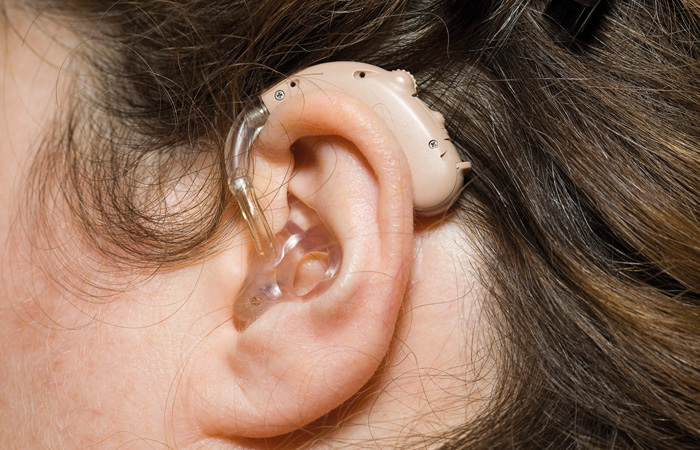Prevention and self-care advice
For those who are prone to recurrent OE, the following self-care advice is helpful:
- Avoid damage to the external ear canal. Do not use any item, including cotton buds or swabs, to clean it
- If earwax has been a problem associated with OE and ear drops have not cleared it, have the wax removed by a professional
- Regular use (i.e. weekly) of olive oil or proprietary earwax drops to reduce wax
build-up (which may trap water) can help - If the ears are flaky or scaly, or if there is excessive earwax, get them cleaned by a professional periodically.
A dry ear is unlikely to become infected, so keep the ears clean and dry by:
- Keeping water out of the ears during swimming or bathing and tilting the head to tip out any liquid afterwards
- Using swimming ear plugs or a tight-fitting cap when swimming
- During an acute episode of OE, do not swim or do other water-based activities for at least seven to 10 days
- During bathing or showering, make an effort to keep shampoo, soap and water out of the ears
- After hair washing, bathing or swimming, use a hair dryer (lowest heat setting) to dry the ear canal.
Ensure skin conditions that are associated with the development of OE are optimally managed:
- With allergies or sensitivity to ear plugs, hearing aids or earrings, these should be avoided or alternatives used (e.g. non-latex, hypoallergenic swimming ear plugs and hearing aids)
- It is important that chronic skin conditions such as eczema or psoriasis are well managed
- Consider suggesting using OTC acidifying ear drops or spray, such as acetic acid, shortly before swimming, after swimming and at bedtime.
Dermatitis and other conditions associated with otitis externa
A fairly common cause of OE is contact dermatitis caused by allergy or irritants. This can lead to recurrent episodes of OE or prolonged symptoms that do not fully resolve with treatment so that OE becomes chronic.
Common contact allergens include earrings that contain nickel and numerous cosmetic products (e.g. shampoos, hairsprays, lotions, hair colourants). Patients may also develop allergies to topical antibiotics used for OE, particularly aminoglycosides such neomycin or gentamicin.
Hair products can also create an irritant dermatitis, as can products used to clean the ears. Hearing aid components can cause both allergic and irritant contact dermatitis.
Cases should be suspected in those who have recurrent or persistent symptoms and red, swollen, itchy and exuding lesions. These may affect the outer ear and sometimes the earlobe and skin of the neck.
Skin allergies?
It is worth asking patients whether they have a known ‘contact’ or skin allergy, although the external auditory canal may react to allergens that do not cause a reaction elsewhere.
Contact dermatitis of the ear requires avoidance or withdrawal of allergic triggers, especially earrings. Trial and error may be needed to identify the offending agent. If cases are suspected, these patients should be referred. Patch testing may be required to identify the allergen.
Topical corticosteroids such as hydrocortisone or betamethasone preparations can decrease inflammation and itching. In severe cases that are not resolving, a short course of an oral corticosteroid such as prednisolone is used.
Patients should avoid using cotton swabs, water and other potential irritants in the ear because these will aggravate the inflammatory process.
Other skin conditions such as psoriasis, eczema and seborrhoeic dermatitis may produce debris and skin breakdown in the ear canal, which can also encourage infection and OE.
Seborrhoeic dermatitis associated with the Malassezia fungus often presents as dandruff, sometimes with involvement of the skin behind the ears and inside the ear canal.
It can predispose to OE by disrupting the skin barrier in the ear canal, producing chronic scaling, flakiness and inflammation, leading to scratching and further damage to the skin, enabling access to infection.
Prevention can be achieved through treatment of both the dandruff and the affected skin in and around the ears with an antifungal agent.
Hearing aids and otitis externa
Around 2 million people wear hearing aids in the UK. Unfortunately, a common problem with hearing aids is that their use can result in OE. This can be difficult to treat without removing the hearing aids and allowing the ear to ‘dry out’.
Although not using hearing aids for a period of time may be a nuisance, the devices can obstruct proper ventilation. Also, there may be discharge from the ears that can build up if the hearing aid is not removed; this may also stimulate wax production as the body tries to clear the debris.
Generally, it is better to remove hearing aids while ear preparations for treating OE are used.
Some tips for preventing OE in hearing aid users are as follows:
- Take the hearing aid out at night to allow the device and ears to dry out
- Regularly clean and disinfect hearing aids using manufacturer-
recommended methods and products. Avoid using harsh chemicals for cleaning. Ensure thorough drying to prevent moisture build-up. This may involve a UV light dryer for added protection - Maintain good ear hygiene by gently cleaning the outer ear with a washcloth and avoid using cotton buds, which can push wax deeper into the ear canal
- Have regular check-ups with an audiologist to ensure proper fitting and functioning of hearing aids. An audiologist can also inspect for signs of infection or irritation
- Minimise exposure to environmental irritants such as tobacco smoke, allergens and pollutants, which can exacerbate ear inflammation
- Consider the use of hypoallergenic hearing aid materials for the ear moulds.

